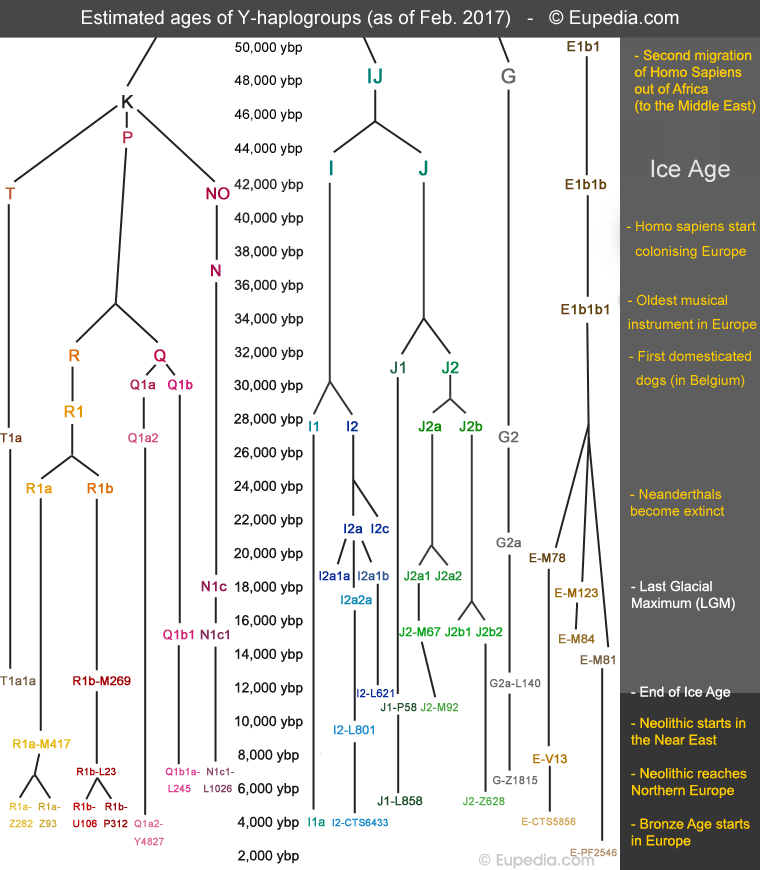If I1 is around 28,000 years old and I1a is around 4,000 years old (I understand these are estimations), and I1a accounts for 99% of all I1 lineages alive today does that mean 99% of the I1 lineages alive between 28,000 and 4,000 are now extinct? Does that mean I1 was not that prevalent around Europe during those years or more so that the majority of those lineages were wiped out by the R Indo Europeans?
No simple answer to your questions, there are several things to consider:
Subgroups are defined, only if they can be recognized. As long as there are only a few people known with the same mutations, they are regarded as private mutations, no groups. So you need a certain threshhold which has to be reached, until a new subgroup can be defined. There may be a lot of subgroups hidden in some haplogroup even if there are no subgroups known, they are not extinct but dormant.
Yes indeed, many subgroups go extinct and evolution works usually against the smallest members. Consider a mountain village of 100 male people, but only one with HG I1. Over night an avalanche wipes out 30% of the population. So only 0.7 individuals of I1 statistically survived, but it can only be either none or one. Several repetitions of catastrophes (bottlenecks) will always have the tendency to wipe out the smallest groups. Over time that makes the extinction of small subgroups practically inevitable.
The reproduction of a group heavily depends on their lifestyle. Agricultural communities can feed more people than others, they will be preferred by evolution, pastoral communities can produce less food, but they are still in a better position than hunter-gatherers, who don't have their life stock around the whole year. Demography won't be in favour of the hunters and it is assumed that I1 was a hunter-gatherer group until the third millenium BC.
When things suddenly change to the better for the small groups there can be only a few reasons for this. Either the environment has changed to the disadvantage of the dominant groups or the small groups changed their lifestyle, so their disadvantage is gone. A third possibility is that the small group has been assimilated by a more successful group. They will propagate more than before, thus may become 'visible' for the geneticist, but there is still the tendency to reduce (in percentage of the main group) over time due to the effect of bottlenecks described above. So they still can become 'extinct' even as part of the greater group.
Typical for HG I1 is that they began to split into several groups in a time where R1a (subgroups M458 and Z280) and R1b (U106 and P312) were taking over in Europe (about 4500 years ago). There are good reasons to assume that there is a connection, that Indoeuropeans forced changes in I1, be it the lifestyle or assimilation.



